Lesson Outline
Lesson Media Objects
 Deana Namuth-Covert
Deana Namuth-Covert
Professor, Director of Online Education and Outreach, The Ohio State University; Agronomy & Horticulture Adjunct Professor, University of Nebraska
dcovert2@unl.edu
Erosion
Factors Continued...Land Management
Land Management 

Land Development projects, such as road and housing construction, can contribute to soil erosion and sedimentation both during and after the actual construction activity. Clearing, grading, and other activities disturb the soil surface, remove existing vegetation, and alter topography, thereby increasing erosion risk. Massive land clearing done by large construction equipment pulverizes the soil and clears all vegetation. This mechanical disturbance exposes the soil directly to the impact of rainfall energy. Highly disturbed soils have also lost much of the organic matter that glues them together. Also, the rate of water infiltration is usually decreased and water that does not soak into the soil runs off carrying sediment.
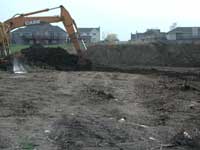
Construction disturbs the soil leaving it highly susceptible to erosion. Image by M. Mamo |
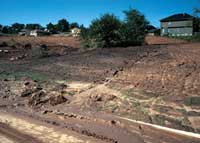
Rill erosion on an urban construction site. Image by NRCS |
SOIL FACT
Soil erosion due to urban development often exceeds 40 tons per acre per year (typical agricultural land is usually less than 10 tons per acre per year).
|
|
|
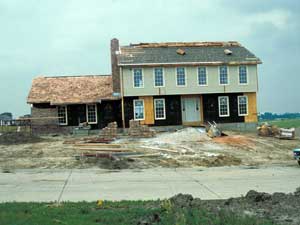 |
|
Image by R. Sutton |
|
Thinking Question:
The house shown on this picture does not yet have drain gutters and downspouts. How will the presence of a housing structure and the lack of drain gutters affect soil erosion? |
Irrigation practices can increase runoff by over-saturating the soil or allowing sprinklers to spray onto impervious surfaces. Under sprinkler irrigation system, water droplets can create splash erosion, if the soil is not fully covered with mulch or vegetation.
Mechanical disturbance affects soil physical properties, specifically by disrupting soil aggregation, causing increase erosion potential. For example, tillage buries soil cover or residue that otherwise would serve to protect the soil from erosion.
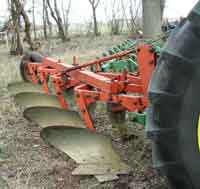 |
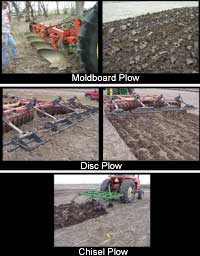 |
A moldboard plow, part of a conventional tillage system, inverts the soil along with the surface residue. Most (if not all) of the residue is incorporated and/or buried, leaving a rough soil surface.
Image by M. Mamo |
Various tillage implements and the soil disturbance that results.
Image by M. Mamo |
|
|
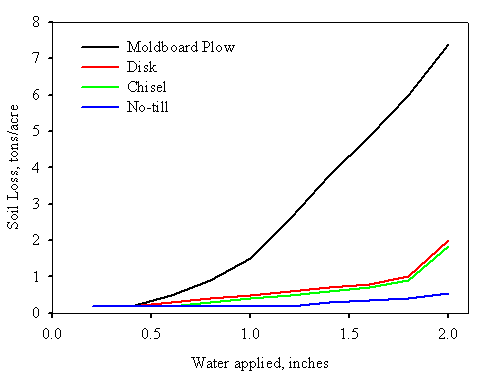 |
Soil loss associated with tillage systems used for planting corn into corn residue on a silt loam soil in northeastern, NE. Water was applied at the rate of 2.5 inches per hour.
Image by UNL |
|
Thinking Question:
Why is there more soil loss under the moldboard plow compared to other tillage systems?
Using the pictures, make a comparison of soil surface characteristics of the different tillage systems. |

 Deana Namuth-Covert
Deana Namuth-Covert
Comments